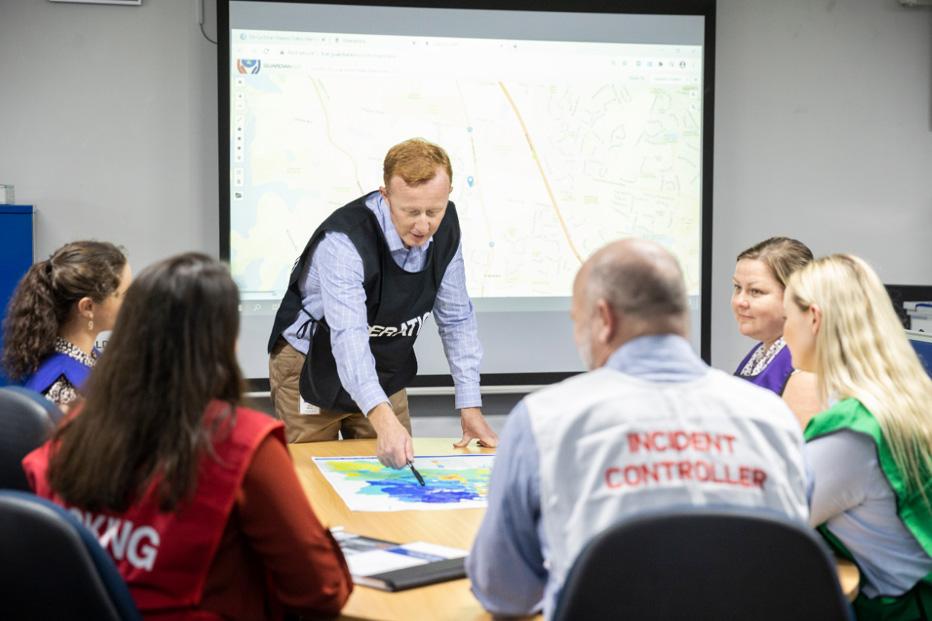Moreton Bay Regional Council, QLD
Right Time, Right Info: Preventing business closures after disasters

The Initiative
Moreton Bay’s business community endured a series of extreme disruptions, from rolling floods and acute workforce shortages in 2022 to further flooding impacts in December 2023 and January 2024. Timely communication of critical information was vital as businesses struggled to recover.
The City of Moreton Bay strategically integrated Australia Business Register (ABR) data into its Customer Relationship Management (CRM) system to identify and quantify the scale of impact.
By overlaying CRM business data with disaster mapping, (such as the buildings at threat dataset), the Council quickly and confidently determined:
- 18% of 3,000 buildings under threat were business premises
- one in five businesses were located within catchment alert areas
- almost 2,000 businesses were in upstream Catchment Alert Group areas, and
- over 100 businesses were in the highest impacted areas.
Business Resilience Officers could then be deployed in a targeted way. This also enabled the Council to comprehensively understand the impact of weather events on businesses indirectly impacted and target relevant information to them.
In 2022, more than 15,000 business owners received personalised information after the initial disaster, including a two–page flood recovery–business support document by personalised email. Of these businesses, over 6,500 engaged with this communication (equating to a 43% open rate compared to the 19.6% industry benchmark for government).
In response to the 2023–24 summer floods, the Council rapidly deployed the same approach and identified 781 businesses in the impacted area. Personalised communication was sent to 730 businesses, and more than 40%, 315 businesses engaged with the assistance provided.
Previously, the Council’s primary information source on potentially affected businesses has been a rates database, which often fails to include those operators who are not property owners.
The Council’s new approach has reduced the economic impact of disasters. There has been no significant increase in GST cancellation rates in the region. Pre–covid the region experienced a 3.23% business exit rate; this exit rate was 3.53% in 2021–22 and 3.18% 2022–23.
These outcomes are exceptional as the projected closures could have been as high as 21% according to these outcomes are exceptional as the projected closures could have been as high as 21% according to Australian Business Roundtable for Disaster Resilience & Safer Communities, which reported that 80% of businesses affected by a natural disaster do not reopen or fail within two years.
About the Category
The ‘Disaster Readiness and Recovery’ category recognises local government initiatives which:
- support communities to manage and adapt to climatic events by investing in disaster prevention, recovery and preparedness;
- actively reduce risks from disasters and pandemics, particularly as they impact local communities;
- ensure the Australian community is prepared to endure more frequent challenging events; and/or
- implement programs and policies that ensure communities survive and prosper following these events.
Successful initiatives in this award category benefit communities by:
- lowering the potential impacts of disasters and pandemics by analysing and managing the causes;
- identifying risks and mapping capacity to respond to hazards;
- protecting lives and livelihoods, communities and individuals; and/or
- reducing damage or loss from disaster, particularly when it comes to public and private infrastructure.